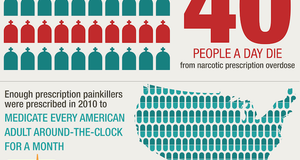Featured Article:A Multi-State Analysis of Correctional Boot Camp Outcomes: Identifying Vocational Rehabilitation as a Complement to Shock IncarcerationHouse Arrest Versus Boot Camp in North CarolinaCriminal justice research libraries teem with comparison evaluations of correctional boot camp programs juxtaposed against standard incarceration (MacKenzie, Brame, McDowall, & Souryal, 1995). However, another viable method for determining the cogency of these programs is to compare their results with those produced by more traditional intermediate sanctions and prison alternatives (Kilgore & Meade, 2004). The United States is burdened with the world’s largest prison population of over one million convicts, with an additional five million probationers and parolees (Jones & Ross, 1997). Ergo, intermediate sanctions have become a popular alternative to incarceration and provide a means to alleviate some of the strain without increasing the risk to the public. However, not all alternatives are created equal and it is the duty of research professionals to determine which programs are most efficacious. The Intensive Motivational Program of Alternative Correctional Treatment (IMPACT) was North Carolina’s version of a traditional boot camp. Its objectives were to instill self-confidence, discipline, and work ethic via an organized militaristic regimen. Program participants were male offenders ranging in age from 16 to 25 who had been convicted of misdemeanor and/or non-serious felony crimes and had not previously served more than 120 days in a correctional facility.Herein, it is obvious that those admitted into the IMPACT program were comparably lower-risk than would normally require participation in a prison alternative program. Upon successful completion of the 90-day program, graduates served the remainder of their sentence on supervised probation. IMPACT participants conducted manual labor for seven hours per day for various government agencies and those who had not graduated from high school were afforded tutoring services. On the contrary, offenders ordered to electronic house arrest (EHA) in North Carolina were confined by electronic monitoring for a period of 90 days after which time they were released as high-risk cases on regular probation (Jones & Ross, 1997). Jones and Ross (1997) conducted a comparative evaluation of recidivism rates in North Carolina produced by EHA compared to the IMPACT program by analyzing subsequent fingerprinted arrest statistics among the offenders. They affirmed that IMPACT graduates were rearrested in dramatically lower numbers than the EHA group; 38 percent less for violent/felonious sex offenses, 44 percent less for property crimes, and 45 percent less for drug offenses. Overall, only 47 percent of IMPACT graduates had recidivated by the time of the study. Though the data appeared to substantiate the efficacy of correctional boot camps, the researchers contended that the EHA results were likely skewed by factors which could not be accounted for in the analysis such as increased supervision, technical violations, and increases in punishable probation offenses. Moreover, the strict admission requirements for the IMPACT program essentially transformed it into a probation alternative rather than an incarceration alternative since most participants were low-risk offenders. Accordingly, the EHA population represented a comparably more high-risk pool for recidivism than that of IMPACT graduates. The recidivism rates observed in the study were influenced primarily by the types of individuals within the groups more so than by the management or operations of the respective programs. Recidivism Reduction Through Vocational RehabilitationContemporary recidivism literature is commanded by studies relevant to offenders who suffer from sexual paraphilia and/or substance abuse problems as well as attempts to quantify deterrence measures believed to be associated with mandatory sentencing guidelines (Colins et al., 2011; Kunselman & Vito, 2002; Lussier & Davies, 2011). However, precious little mention is made of the relationship between offender employability and the likelihood of recidivism. Nonetheless, Hancock and Raeside (2009) concluded that employability had a statistically significant positive relationship with recidivism among 200 prisoners studied over an eight-month period following release. Further research has concluded that offending diminishes when offenders obtain and maintain employment. Remaining employed greatly reduces the likelihood of recidivism (Nally, Lockwood, Knutson, & Ho, 2012; Vennard & Hedderman, 2009). Though previous employment intervention efforts have been successful in reducing reoffense, assistance is generally not offered to more than half of all probationers and parolees in the United States (Bridges, 1998). This demonstrates that an effective strategy has been under-employed even though recidivism rates remain discouraging. Notably, most crimes are committed by a relatively small offender population comprised of career criminals. This fact was largely responsible for the rampant adoption and revision of mandatory sentencing laws across the United States in the mid-1990s. However, longitudinal analyses have revealed that the resultant deterrence effect was either negligible or non-extant and largely attributable to a pre-existing reduction in crime rates observed throughout North America (Chen, 2008; Eskridge, 2004, pp. 15-23). Given that the concept of deterrence has been unable to evolve from theory into praxis, rehabilitation and reintegration strategies must be seriously considered. If an offender is reintegrated at an early enough stage in his/her criminal career, a cumulative recidivism effect should result; as would be observed if the same offender were incapacitated via incarceration (Davidson, Jimenez, Onifade, & Hankins, 2010). The difference is that public funds are required to maintain custodial supervision of a convict, while an employed offender becomes an independent entity in the private sector. Therefore, the need for vocational rehabilitation initiatives within correctional settings is axiomatic. The under-21 age demographic represents the most viable period for employment intervention as these offenders may be more easily diverted from their criminal paths and the resultant effects should become cumulative. Deflecting these offenders from their criminal careers would have a residual effect on overall recidivism rates as these programs would specifically target the most frequently offending group (Douglas, Epstein, & Poythress, 2008; Leschied, Austin, & Jaffe, 1988). Such a large pool of candidates also increases the odds of success, given that program administrators may be more stringent in selecting participants. As has been repeatedly affirmed in program evaluations of correctional boot camps, the selection process is the first line of defense against graduate recidivism (Bottcher & Ezell, 2005; Jones & Ross, 1997; Kempinen & Kurlychek, 2003; MacKenzie, D. L., Brame, R., McDowall, D., & Souryal, C., 1995). Additionally, since their historic re-offense rate is so high, retrospective analyses will prove more cogent in determining the impact of the treatment protocol if a properly randomized control group can be established for comparison. Perceived employability presents a major obstacle in the path of offenders who wish to reintegrate. Excluding persons with psychiatric or intellectual disabilities, ex-convicts are perceived by the general public as the group least likely to possess the skills and characteristics associated with employability. Such is why numerous monetary incentives are offered to employers who hire ex-prisoners and offenders under non-custodial supervision. However, research has also indicated that perceptions improve regarding offenders’ ability to maintain employment after they have obtained a position. Moreover, significant improvements in perception where observed when offenders had completed some form of prerelease training (Graffam, Shinkfield, & Hardcastle, 2008). Therefore, the primary challenge is getting offenders trained and hired, while probation agencies are fully capable of supervising thereafter. Perception is also an important component in occupational functioning. A cogent program must consider how particular offenses are perceived by potential employers in order to develop an adequate selection process for participants (Nally, Lockwood, Knutson, & Ho, 2012). Low qualifications and severity of criminal charges significantly influence perceived employability. For instance, applicants with misdemeanor and drug possession convictions are able to increase their perceived employability with proper qualifications. However, qualifications appear to be inadequate to improve perceptions of offenders with serious felony convictions. Therefore, employment intervention must be conducted prior to an offender’s release from custody, such as during their time in a shock incarceration of correctional boot camp program. Moreover, qualifications alone are insufficient to successfully reintegrate offenders unless an advocacy group assists them in securing employment prior to release (Varghese, Hardin, Bauer, & Morgan, 2010). Coordination between probation and employment agencies is absolutely vital to overall success as similar programs have been proven effective in the past (Hancock & Raeside, 2009).Continued on Next Page » Suggested Reading from Inquiries Journal
Inquiries Journal provides undergraduate and graduate students around the world a platform for the wide dissemination of academic work over a range of core disciplines. Representing the work of students from hundreds of institutions around the globe, Inquiries Journal's large database of academic articles is completely free. Learn more | Blog | Submit Latest in Criminology & Criminal Justice |


















